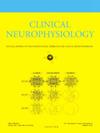Evaluation of the diagnostic performance of brachial plexus ultrasound in amyotrophic lateral sclerosis
IF 3.7
3区 医学
Q1 CLINICAL NEUROLOGY
引用次数: 0
Abstract
Objective
This study aimed to assess the diagnostic performance of brachial plexus cross-sectional area (BP-CSA) measured by nerve ultrasound (NUS) for differentiating amyotrophic lateral sclerosis (ALS) from controls.
Methods
A retrospective, cross-sectional study was conducted including patients with ALS and control patients who underwent NUS evaluation of the BP-CSA and the cervical nerve root CSA (C-CSA). Reference values for BP-CSA were built using reference cohort. Receiver operating characteristic curve analysis was performed in independent discovery and validation cohorts to assess the diagnostic performance of BP-CSA.
Results
A total of 244 patients (114 ALS and 130 controls) were included. BP-CSA significantly correlated with body weight (coefficient = 0.50, p < 0.001). After adjusting for body weight, BP-CSA values were significantly lower in patients with ALS than controls (p < 0.001). Adjusted BP-CSA showed superior diagnostic performance compared to C-CSA, with area under the curve values of 0.75 (95 % CI: 0.64–0.86) and 0.78 (95 % CI: 0.68–0.88) in the discovery and validation cohorts, respectively.
Conclusions
BP-CSA, when adjusted for body weight, shows reliable performance in diagnosing ALS.
Significance
This study highlights the clinical value of BP-CSA as a potential ALS diagnostic biomarker and underscores its superiority over cervical nerve root measurements.
臂丛超声对肌萎缩侧索硬化诊断价值的评价
目的探讨神经超声(NUS)测量臂丛横断面积(BP-CSA)对肌萎缩性侧索硬化症(ALS)的诊断价值。方法采用回顾性横断面研究方法,对ALS患者和对照组患者进行NUS评估BP-CSA和颈神经根CSA (C-CSA)。采用参考队列法建立BP-CSA的参考值。在独立的发现和验证队列中进行受试者工作特征曲线分析,以评估BP-CSA的诊断性能。结果共纳入244例患者,其中肌萎缩侧索硬化症114例,对照组130例。BP-CSA与体重显著相关(系数= 0.50,p <;0.001)。在调整体重后,ALS患者的BP-CSA值显著低于对照组(p <;0.001)。与C-CSA相比,调整后的BP-CSA显示出更好的诊断性能,在发现和验证队列中,曲线下面积分别为0.75 (95% CI: 0.64-0.86)和0.78 (95% CI: 0.68-0.88)。结论经体重调整的sbp - csa对ALS的诊断效果可靠。本研究强调了BP-CSA作为ALS潜在诊断生物标志物的临床价值,并强调了其优于颈神经根测量的优势。
本文章由计算机程序翻译,如有差异,请以英文原文为准。
求助全文
约1分钟内获得全文
求助全文
来源期刊

Clinical Neurophysiology
医学-临床神经学
CiteScore
8.70
自引率
6.40%
发文量
932
审稿时长
59 days
期刊介绍:
As of January 1999, The journal Electroencephalography and Clinical Neurophysiology, and its two sections Electromyography and Motor Control and Evoked Potentials have amalgamated to become this journal - Clinical Neurophysiology.
Clinical Neurophysiology is the official journal of the International Federation of Clinical Neurophysiology, the Brazilian Society of Clinical Neurophysiology, the Czech Society of Clinical Neurophysiology, the Italian Clinical Neurophysiology Society and the International Society of Intraoperative Neurophysiology.The journal is dedicated to fostering research and disseminating information on all aspects of both normal and abnormal functioning of the nervous system. The key aim of the publication is to disseminate scholarly reports on the pathophysiology underlying diseases of the central and peripheral nervous system of human patients. Clinical trials that use neurophysiological measures to document change are encouraged, as are manuscripts reporting data on integrated neuroimaging of central nervous function including, but not limited to, functional MRI, MEG, EEG, PET and other neuroimaging modalities.
 求助内容:
求助内容: 应助结果提醒方式:
应助结果提醒方式:


